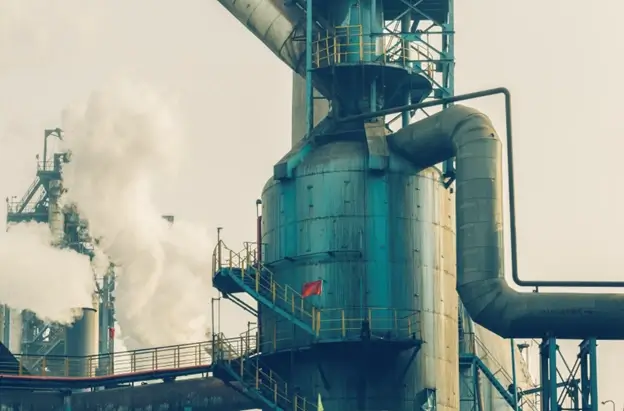


Legacy systems are both heroes and villains of technology, serving as testament to years of innovation and growth in organizations while often reflecting earlier eras of technology. But at what point do software or infrastructure become “legacy systems,” and why should businesses care? In this blog, we will look at what defines them, their advantages, disadvantages and potential risks they pose to businesses.
A legacy system is typically defined as software or hardware that is still in use but has become outdated or unsupported compared to current technologies, though it is not necessarily broken. Although legacy systems often continue performing important tasks, they fall behind in performance, compatibility, scalability or security. Transition to “legacy” status typically happens when:
Legacy systems do not necessarily represent bad investments, but their performance lags behind industry standards, making them an important focus in your business’s technology strategy discussions.
Legacy systems do carry negative connotations, but they have their own benefits that justify businesses keeping hold of them. Here are a few reasons why businesses continue using legacy systems.
Legacy systems have proven their reliability over time, earning trust among businesses such as banking, healthcare and government for their stability and consistent performance. This is particularly evident when operational dependability is considered important in those sectors. Organizational processes rely heavily on information systems for their daily functions. Such systems become invaluable tools in this regard. Legacy systems give better assurance in environments that rely on uninterrupted operations than newer technologies can, such as environments in which even minor outages could have severe repercussions. Therefore, many businesses choose to retain legacy systems because of their longstanding efficiency and assuring operation without interruptions.
Many legacy systems were initially designed to meet stringent industry regulations. These systems typically incorporate customized features that meet the unique business requirements, something many modern off-the-shelf solutions lack. Customization makes legacy systems particularly effective for organizations operating within heavily regulated industries, where meeting compliance is extremely important. Newer technologies can promise greater flexibility and innovation, but legacy systems often remain necessary to ensure regulatory compliance and operational integrity for businesses. As such, businesses often rely on them to meet the detailed requirements.
Deliberately replacing legacy systems can be enormously costly in terms of the initial investment and effort required for migration. Organizations on tight budgets often opt to leave legacy systems as is and forgo any unnecessary replacement efforts. They live by the saying of “if it ain't broke don't fix it”.
Employees familiar with legacy systems develop expertise that enhances their efficiency and productivity. Their familiarity helps reduce errors while facilitating smooth workflows as they understand its intricacies and processes better than anyone. Switching over would require extensive training as well as time, causing steep learning curves with potential disruptions for everyone. Also the knowledge acquired over time with legacy systems is often seen as valuable organizational assets that make migration less likely in favor of maintaining operational continuity over the risks posed by abrupt shifts in technology or routines.
While legacy systems do provide advantages in modern business ecosystems, their shortcomings can inhibit progress and hinder expansion. Here are some of their more significant downsides:
Legacy systems can be vulnerable to cyber attacks. Without vendor support or regular security patches, these legacy systems provide hackers with easy entryways into vulnerable networks exposing sensitive data while undermining business continuity.
Businesses can change very quickly, but legacy systems don't always provide enough scalability to keep pace. Whether it's launching new products or entering global markets, legacy systems limit adaptability.
Outdated hardware and software tends to run slower and be less effective at accomplishing tasks, impacting productivity significantly in the form of slower task completion times that could have taken seconds on modern systems.
Legacy systems struggle to connect with emerging technologies, restricting innovation and creating data silos that lead to fragmented workflows and reduced decision-making capabilities. This all can have very serious repercussions.
Although holding onto legacy systems may appear to be a safe bet initially, their continued use can expose businesses operating in dynamic and fast-paced environments to serious risks.
Governments and industry groups are regularly revising security and operational guidelines. Legacy systems that once met these requirements may no longer comply, placing companies at risk of legal penalties as well as irreparable harm to their reputations.
Lacking support or replacement parts for legacy hardware increases the chance of outages, crippling operations and undermining customer trust. Reactive maintenance becomes an expensive necessity.
Finding employees or third-party specialists that are knowledgeable with your legacy systems has become more challenging. Professionals accustomed to older technologies go on retirement or transition their attention towards more modern innovations, leaving organizations scrambling for expertise.
When you cling to legacy systems, your business can forfeit opportunities for innovation by failing to utilise modern technologies like AI, blockchain or data analytics. Restricting your ability to innovate and maintain competitive advantages.
When it is time to retire your business’s legacy systems, it is very important to prioritize environmentally-friendly disposal methods. Partnering with certified recycling firms not only makes sure that your outdated hardware is safely recycled but also reduces landfill waste while they also recover valuable materials. Partnering with them demonstrates your dedication to sustainability and also adhering to the applicable disposal regulations.

Legacy systems present a huge conundrum for business. While they provide resilience and cost savings, they often stand in the way of transformation and growth. Organizations must acknowledge both the technological innovation out there and the existing systems’ strengths. Doing so requires having a long-term perspective that includes current needs, future goals and the cost of changes, but with proper planning businesses can make the switch from legacy to modernity easily.